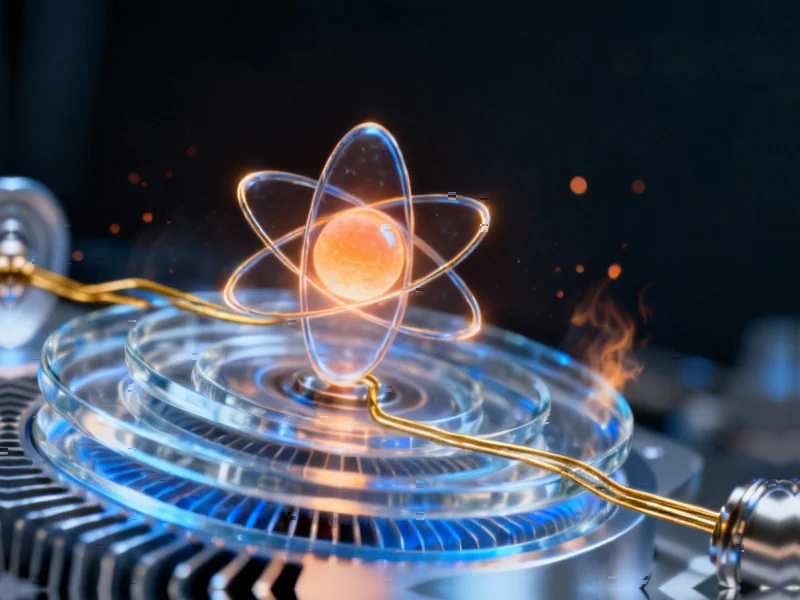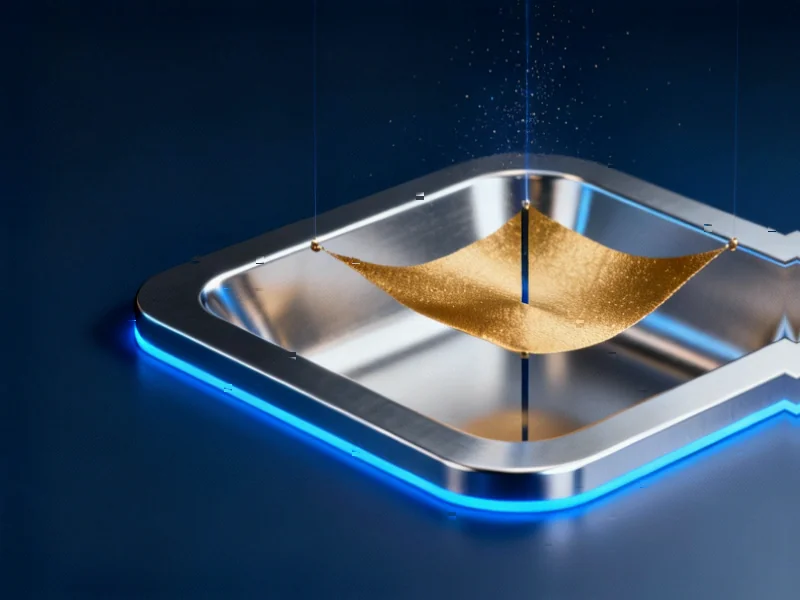The Quantum Refrigeration Revolution
Recent advances in quantum thermodynamics have revealed groundbreaking approaches to reducing thermal noise in microwave resonators using multi-level atomic systems as quantum refrigerators. Unlike conventional cooling methods that rely on bulky equipment and significant energy consumption, these quantum refrigerators operate at the atomic scale, offering unprecedented precision in temperature control. The research demonstrates how three and four-level atomic systems can effectively cool microwave resonators to temperatures approaching liquid helium levels, opening new possibilities for quantum computing and ultra-sensitive detection systems.
Table of Contents
- The Quantum Refrigeration Revolution
- Three-Level Systems: The Foundation of Quantum Cooling
- The Goldilocks Principle: Finding the Optimal Driving Strength
- Four-Level Systems: Overcoming Limitations Through Indirect Pumping
- Practical Applications and Temperature Limits
- Future Directions and Industrial Implications
Three-Level Systems: The Foundation of Quantum Cooling
The fundamental principle behind quantum refrigeration involves using atomic systems to selectively remove thermal energy from microwave resonators. In three-level systems, researchers have discovered an elegant mechanism where atoms act as microscopic heat pumps. The system operates through carefully engineered energy transitions between three distinct atomic states, with the lowest two levels resonantly coupled to the microwave resonator frequency., according to market insights
The cooling mechanism follows a precise sequence: A driving laser applied to the upper transition redistributes population to excited states, while optical emissions release energy as heat. This process effectively creates a zero-temperature system that continuously absorbs thermal photons from the microwave resonator. The mathematical framework describing this process reveals that the atom reaches steady state much faster than the resonator mode, enabling efficient energy transfer through what physicists call “adiabatic elimination.”, according to industry developments
The Goldilocks Principle: Finding the Optimal Driving Strength
One of the most significant findings in this research concerns the delicate balance required in driving laser intensity. While stronger driving initially enhances cooling efficiency, excessive intensity introduces problematic level perturbations that disrupt the resonant energy exchange between the atomic system and microwave resonator.
“We observed a clear optimal range for driving strength,” explains the research. “When the Rabi frequency exceeds the dephasing rates, both cooling and heating rates diminish toward zero, effectively neutralizing the refrigeration effect.”
The research identifies specific boundaries for optimal operation:
- Lower boundary: Where atomic population ratios begin significant redistribution
- Upper constraint: Approximately when driving strength matches the total dephasing rate
- Optimal region: Where ground state population approaches unity without significant perturbation to energy level alignment
Four-Level Systems: Overcoming Limitations Through Indirect Pumping
To address the constraints of three-level systems, researchers developed an innovative four-level configuration that implements an indirect pumping approach. This advanced design introduces a mediated level between the ground and excited states, creating what researchers describe as a “quantum siphonic effect.”
The key improvement lies in the strategic placement of the driving laser, which now acts on transitions that don’t directly perturb the resonant coupling between the lower levels and microwave resonator. This configuration maintains the crucial energy resonance while enabling efficient population transfer through thermal excitation processes.
The four-level system achieves remarkable efficiency by leveraging thermal population in the mediated level, even when this population remains extremely small. This approach eliminates the driving strength limitations observed in three-level systems while maintaining the ability to concentrate population in the ground state, effectively creating an ideal cooling condition.
Practical Applications and Temperature Limits
Based on current experimental parameters, both three and four-level quantum refrigerators can achieve cooling limits reaching liquid helium temperatures (approximately 4.2 K). This represents a significant advancement for applications requiring ultra-low thermal noise environments, including:
- Quantum computing and quantum memory systems
- Ultra-sensitive microwave detection and measurement
- Precision frequency standards and atomic clocks
- Quantum-enhanced sensing technologies
The research provides analytical expressions for cooling limits in both system configurations, offering engineers and researchers practical tools for designing quantum refrigeration systems tailored to specific application requirements. The mathematical framework enables precise prediction of performance based on known experimental parameters, including coupling strengths, decay rates, and dephasing mechanisms.
Future Directions and Industrial Implications
This breakthrough in quantum refrigeration technology represents a paradigm shift in how we approach temperature control at the quantum level. The ability to achieve liquid helium temperatures using atomic-scale systems rather than massive cryogenic equipment could revolutionize multiple industries.
The research opens several promising directions for future development: Scaling these systems for larger quantum processors, integrating them with existing quantum technologies, and exploring hybrid approaches that combine multiple refrigeration mechanisms. As quantum technologies continue to mature, these quantum refrigerators may become essential components in the next generation of quantum devices, enabling previously impossible levels of precision and control in quantum system engineering.
The comprehensive theoretical framework, supported by numerical simulations and practical parameter estimations, provides a solid foundation for experimental implementation and commercial development. With continued refinement, quantum refrigerators based on multi-level atomic systems could soon become standard components in advanced quantum technologies worldwide.
Related Articles You May Find Interesting
- Quantum Sensing Breakthrough: How Hybrid Spin-Optomechanical Systems Are Revolut
- Strategic Minerals Pact: U.S.-Australia Alliance Counters China’s Rare Earth Dom
- Ransomware Payments Hit Record $3.6 Million Average as Attackers Shift Strategy
- Cellular Signaling Patterns Drive Gene Expression Through mRNA Stability Mechani
- Magnetic Alloy Breakthrough Could Revolutionize Hydrogen Fuel Cell Efficiency
This article aggregates information from publicly available sources. All trademarks and copyrights belong to their respective owners.
Note: Featured image is for illustrative purposes only and does not represent any specific product, service, or entity mentioned in this article.



